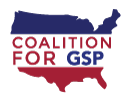Along with the launch of the new site, the Coalition for GSP released updated reports for on why GSP matters for all 50 states (available here). For each state, the reports highlight:
- total GSP imports, tariffs savings, and average tariffs waived on account of GSP in 2016;
- companies importing GSP-eligible products;
- top GSP imports by product type;
- top GSP source countries by tariff savings, and
- the extent to which recent GSP expiration periods prevented “real-time” user benefits.
GSP usage differs greatly between states, from the types of products they import to the dependence on suppliers in specific countries. For example:
- Colorado companies saved $4.5 million on imports of about $60 million, meaning average tariffs waived of about 7.5 percent. That was about twice the U.S. average and nearly triple the 2.6 percent average tariff waived in Louisiana.
- North Dakota‘s imports under GSP in 2016 were primarily food products (56 percent), whereas West Virginia‘s imports were auto parts (44 percent). In most states, a single product grouping accounted for at least a quarter of GSP imports.
- Iowa is among the most concentrated states in terms of source countries, with 94 percent of GSP savings on imports from just three countries (India, Brazil, and Thailand) in 2016. Florida is the least concentrated state, with less than half of GSP savings on imports from its top three source countries.
- Idaho importers have paid tariffs on GSP imports more often than not: nearly 60 percent of tariffs waived on imports into the state since 2011 came when GSP was expired, meaning companies paid up front and “hoped for the best” regarding refunds. Conversely, just 33 percent of New Hampshire‘s tariff savings came during expiration periods since 2011.
All reports are available for download, along with other state-specific info, on the state reports page. A sample of the Kentucky report is below.

